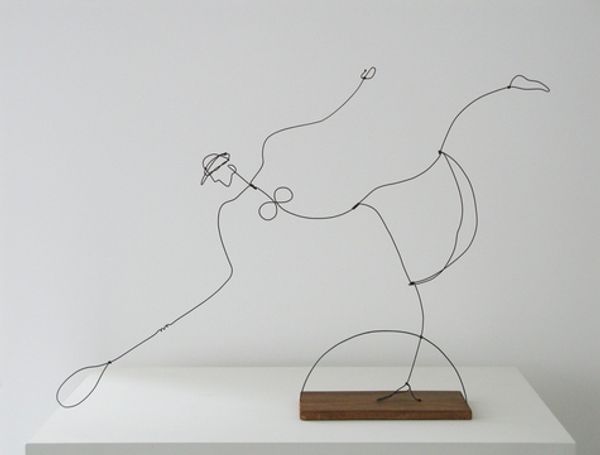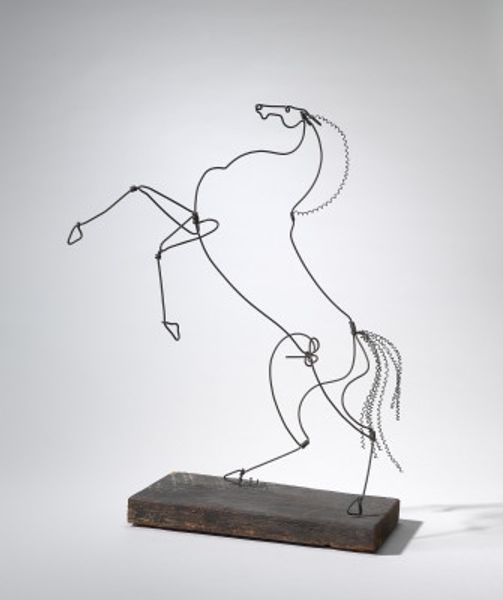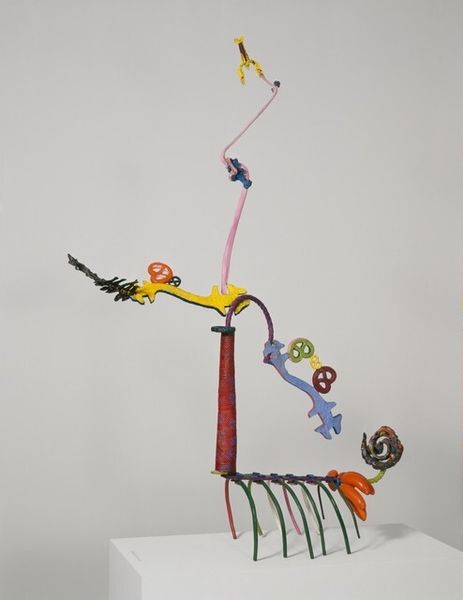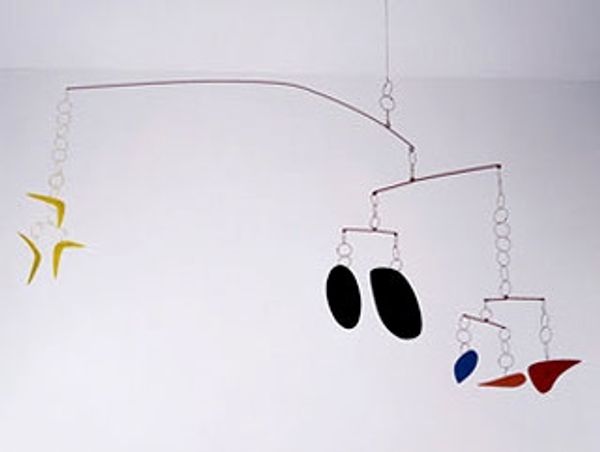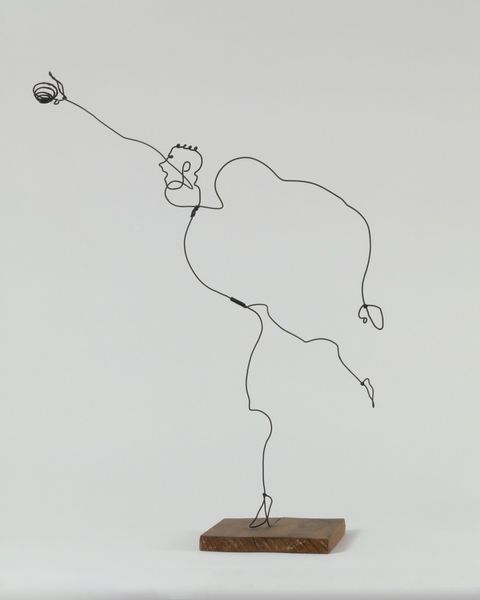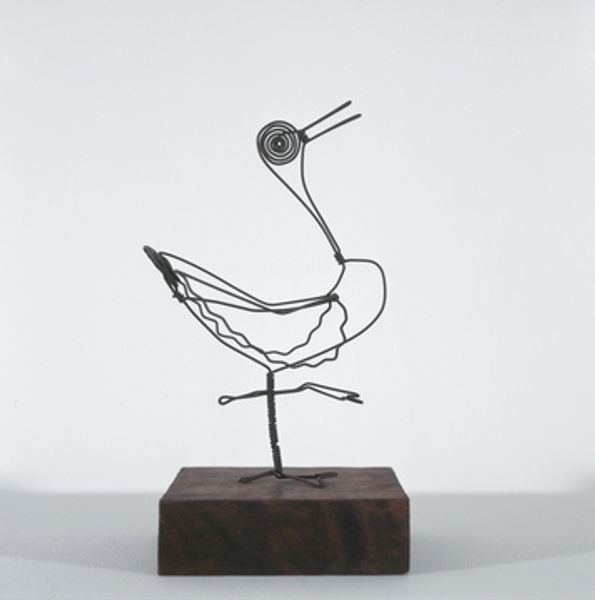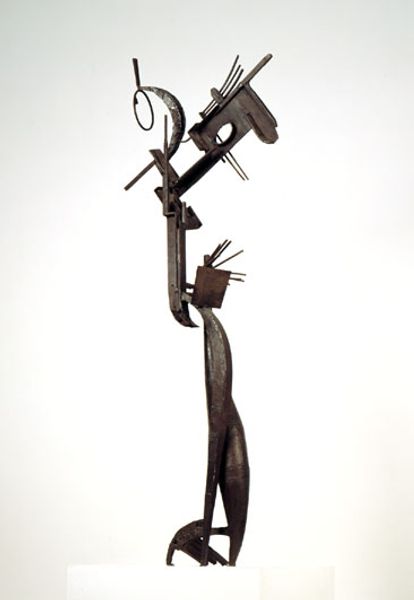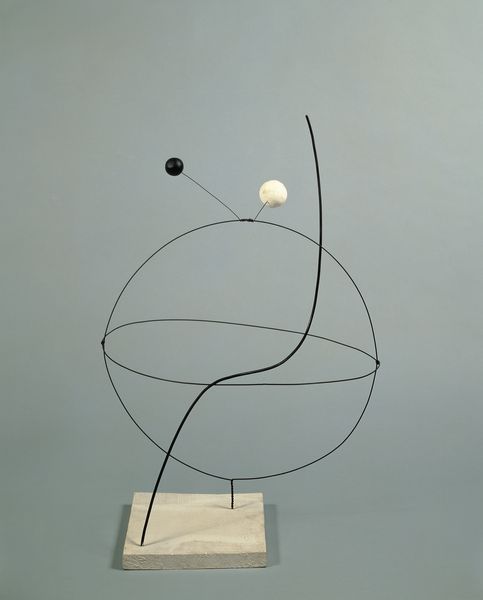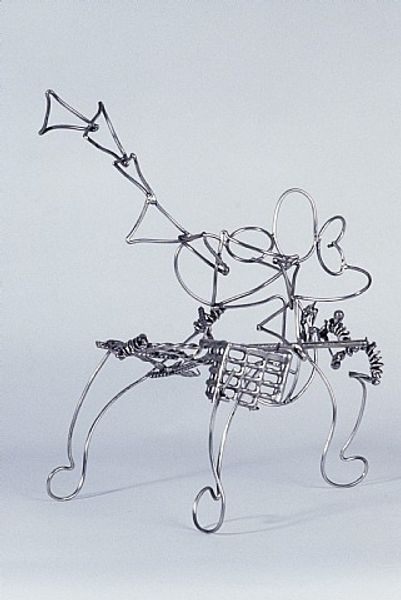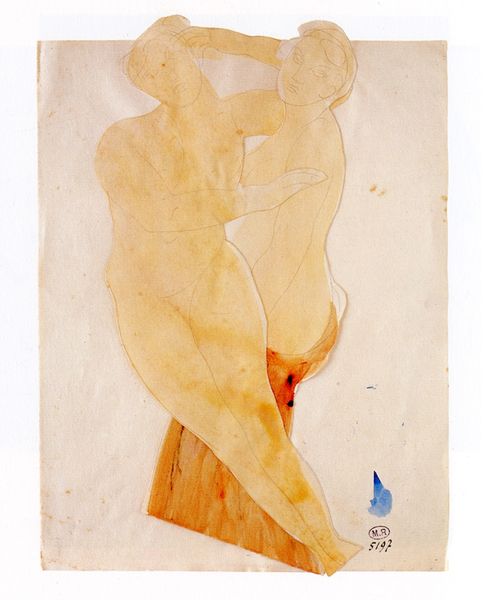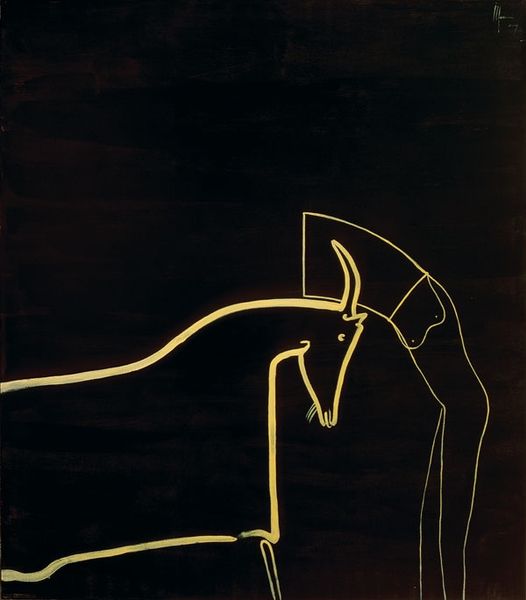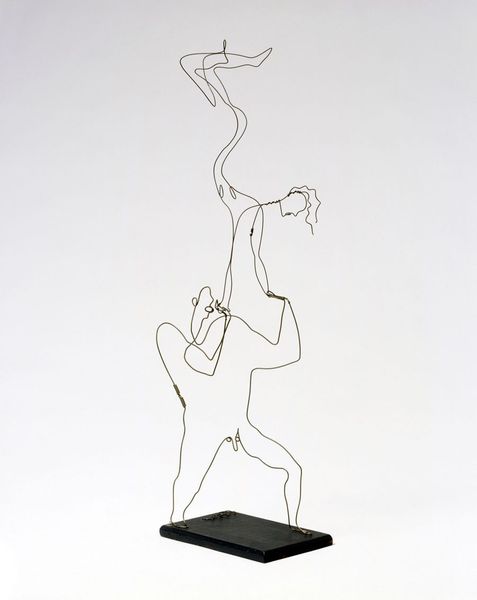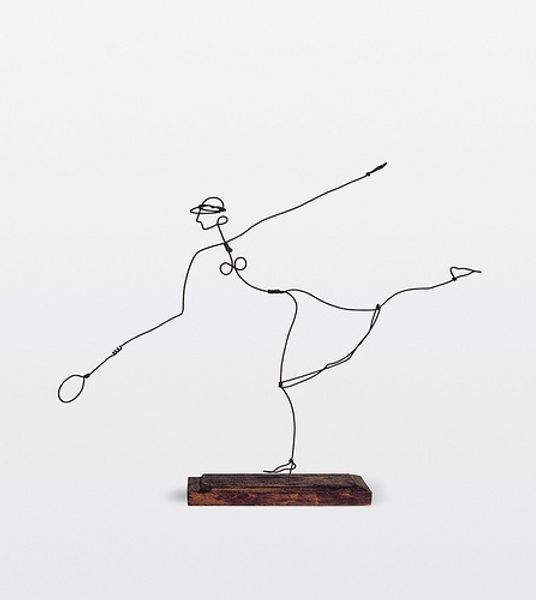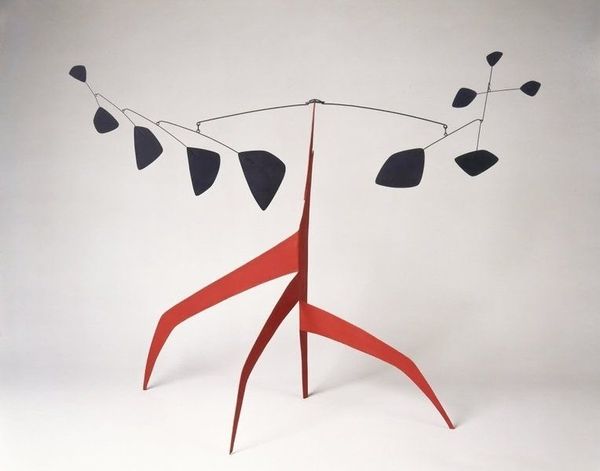
metal, sculpture, wood
#
kinetic-art
#
metal
#
constructivism
#
charcoal drawing
#
form
#
sculpture
#
abstraction
#
line
#
wood
Copyright: Alexander Calder,Fair Use
Editor: Right, let's talk about Alexander Calder's "SINGE" from 1926. It's a sculpture made of metal and wood. It almost looks like a whimsical line drawing brought to life. What strikes me is how delicate it appears, yet it feels surprisingly grounded. How do you interpret this work? Curator: Delicate, yes, but there's a playful tension too, isn’t there? The hanging figure—what *is* it, a dog, a person, an animal? —is crafted with this beautiful, economic use of line and material. You see that lovely wood, that rich density contrasting with the ethereal metal outlines. For me, it sings a song of simplification. Calder’s already flirting with movement, the ghost of wind passing through the wires. Makes you want to give it a little push, doesn't it? I like how Calder embraces an elegant and spontaneous creative form by imbuing basic, ordinary materials such as wood and wire, with meaning and beauty. And isn’t there something profoundly affecting about an artist revealing an authentic vision through reductive elements? It's a magic trick. Editor: Absolutely, the movement it suggests is really compelling, and your point about it being so ambiguous makes me see it differently! It doesn't have to be any specific animal, it can be more like an idea of a creature. Curator: Precisely! Form and fluidity - a dance between what *is* and what *could be*. It’s like a haiku, distilled essence. I think Calder, in those early experiments, gives us permission to dream of figures beyond definition. Perhaps that’s the deepest form of representation. Editor: That makes me see the playfulness so much more. Thanks! Curator: And me too! Always more to discover!
Comments
No comments
Be the first to comment and join the conversation on the ultimate creative platform.
